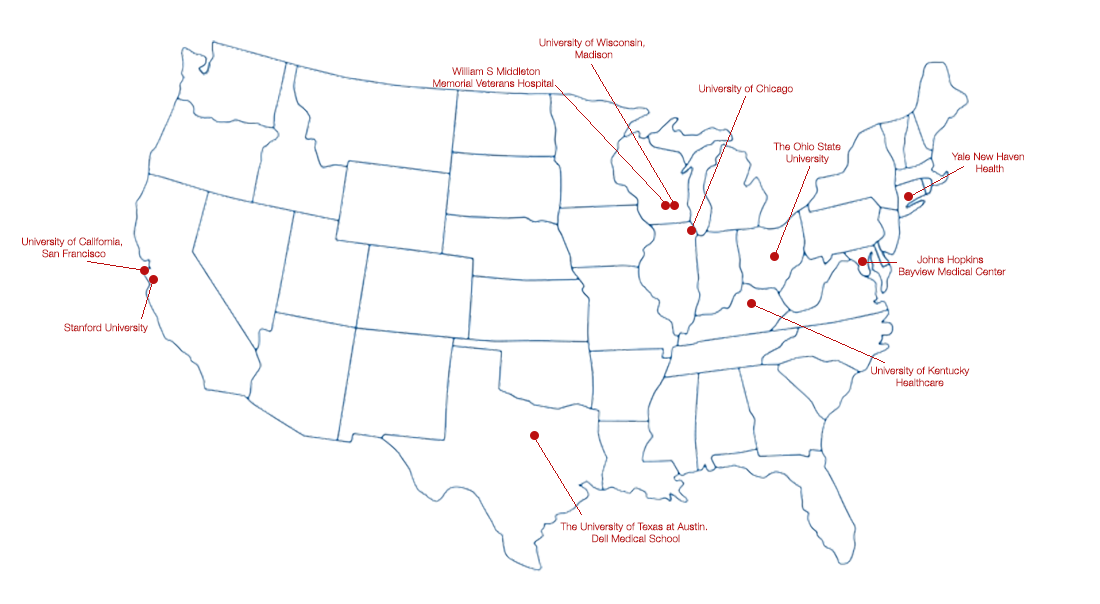Medical Education
Last Updated: Mar. 3, 2021
Team Leads
- Charlie M. Wray, DO, MS, FHM (University of California, San Francisco, San Francisco VA Medical Center)
- Lekshmi Santhosh, MD, MAEd (University of California, San Francisco)
Authors
- Charlie M. Wray, DO, MS (University of California, San Francisco, San Francisco VA Medical Center)
- Lekshmi Santhosh, MD, MPH (University of California, San Francisco)
- Shubhra Gupta, MD (University of California, San Francisco)
- Samantha Wang, MD (Stanford University)
- Sneha Daya, MD (University of California, San Francisco)
- Emily Insetta, MD (University of California, San Francisco)
- Kristen Lewis, MD (The Ohio State University)
- Jennifer Allen, MD (The Ohio State University)
- Sara Vick, MD (University of Kentucky)
- Sherine Salib, MD, FACP (Dell Medical School, University of Texas)
- Joe Sweigart, MD, FHM, FACP (University of Kentucky)
- Blair Golden, MD, MS (University of Wisconsin)
- Sean O’Neill, MD (University of Wisconsin)
- Teddy Holzer, MD (Mount Sinai School of Medicine)
Medical Education Group Publication
Sakumoto M, Dunn A. Educating Beyond Training: Structure and Tools to Support Faculty Development and Lifelong Learning. SGIM Forum. November 2022.
Holzer H, Salib S, Wray C, Santhosh L. Reimagining the Learner–Employee Dyad: Trainees as “Essential Learners.” Acad Med. 2022;97(11):1579-1580. DOI: 10.1097/ACM.0000000000004929
Guo MZ, Allen J, Sakumoto M, Pahwa A, Santhosh L. Reimagining undergraduate medical education in a post-COVID-19 landscape. J Gen Intern Med. 2022;37:2297-2301. DOI: 10.1007/s11606-022-07503-7
Wang S, Santhosh L, Wray C. Leadership & Professional development: how to teach when you don’t know. J Hosp Med. 2021;16(9):556. DOI: 10.12788/jhm.3625
Topic Area
The COVID-19 pandemic brought with it challenges that significantly stretched our health care systems, including the ability to ensure adequate and meaningful communication at all levels.1,2 Shifts in care delivery such as dynamic staffing models, no visitor policies, limited direct contact with COVID patients, and others further exacerbated these challenges.3,4,5,6,7
Residency programs and hospital and institutional leaders had to act promptly to ensure:
1) adequate communication with the residents regarding the rapidly changing protocols,
2) access to guidance on effective communication with patients and family members,
3) availability of guidance on tools for effective communication around death and grieving and other critical conversations.
We reviewed the available data from various internal medicine graduate medical education (GME) programs across the country. From the available data, we found inconsistencies in how GME programs handled communication strategies, with wide discrepancies in the approaches used. Many programs seem to have relied heavily on recurring emails from program leadership to residents for sharing logistical information and inviting frontline provider input. Some programs provided more fulsome guidance through documents, webpages, and shared presentations.
Professional Society Guidance
- The Accreditation Council for Graduate Medical Education (ACGME) has published guidance for sponsoring institutions regarding the COVID-19 pandemic, safety practices, accreditation, evaluations, and Sponsoring Institution Emergency Categorization.
- The Association of American Medical Colleges (AAMC) has provided resources and guidance for medical students on dealing with the COVID-19 pandemic in and out of the hospital setting.
- The National Board of Medical Examiners (NBME) is making available some alternative assessment delivery methods for physicians, medical school faculty, and students.
- Emanuel EJ, Persad G, Upshur R et al. Fair allocation of scarce medical resources in the time of Covid-19. N Engl J Med. 2020;382(21):2049-2055. doi: 10.1056/NEJMsb2005114
- Rubinelli S, Myers K, Rosenbaum M, Davis D. Implications of the current COVID-19 pandemic for communication in healthcare. Patient Educ Couns. 2020;103(6):1067-1069. doi: 10.1016/j.pec.2020.04.021
- Sarteau AS, Souris KJ, Wang J et al. Changes to care delivery at nine international pediatric diabetes clinics in response to the COVID‐19 global pandemic. Pediatr Diabetes. 2021 Jan 19; [Epub ahead of print]. doi: 10.1111/pedi.13180
- Dewey C, Hingle S, Goelz E, Linzer M. Supporting clinicians during the COVID-19 pandemic. Ann Intern Med. 2020;172(11):752-753. doi: 10.7326/M20-1033
- Wijesooriya NR, Mishra V, Brand PLP, Rubin BK. COVID-19 and telehealth, education, and research adaptations. Paediatr Respir Rev. 2020;35:38-42. doi: 10.1016/j.prrv.2020.06.009
- Valley T S, Schutz A, Nagle MT. Changes to visitation policies and communication practices in Michigan ICUs during the COVID-19 pandemic. Am J Respir Crit Care Med. 2020;202(6):883-885. doi: 10.1164/rccm.202005-1706LE
- Auerbach A, O’Leary KJ, Greysen SR, et al. Hospital ward adaptation during the COVID-19 pandemic: A national survey of academic medical centers. J Hosp Med. 2020;15(8):483-488. doi: 10.12788/jhm.3476

